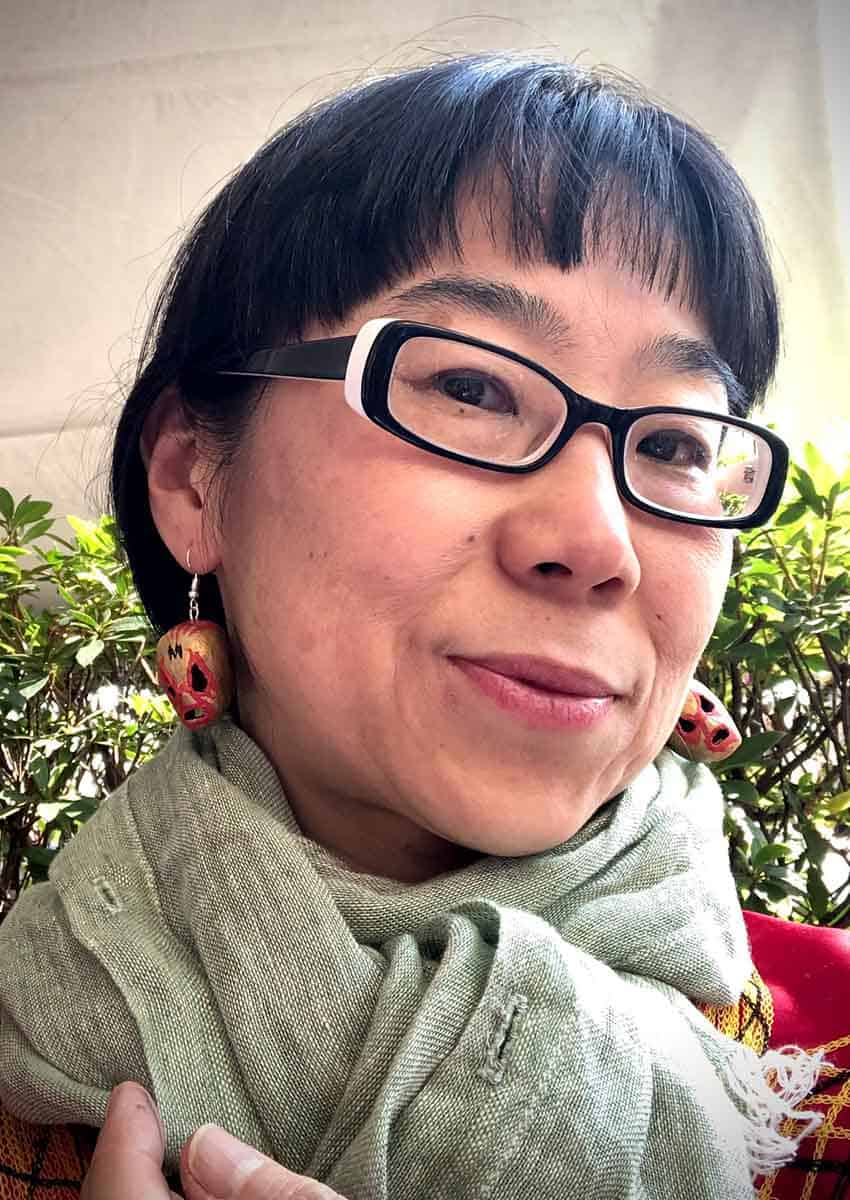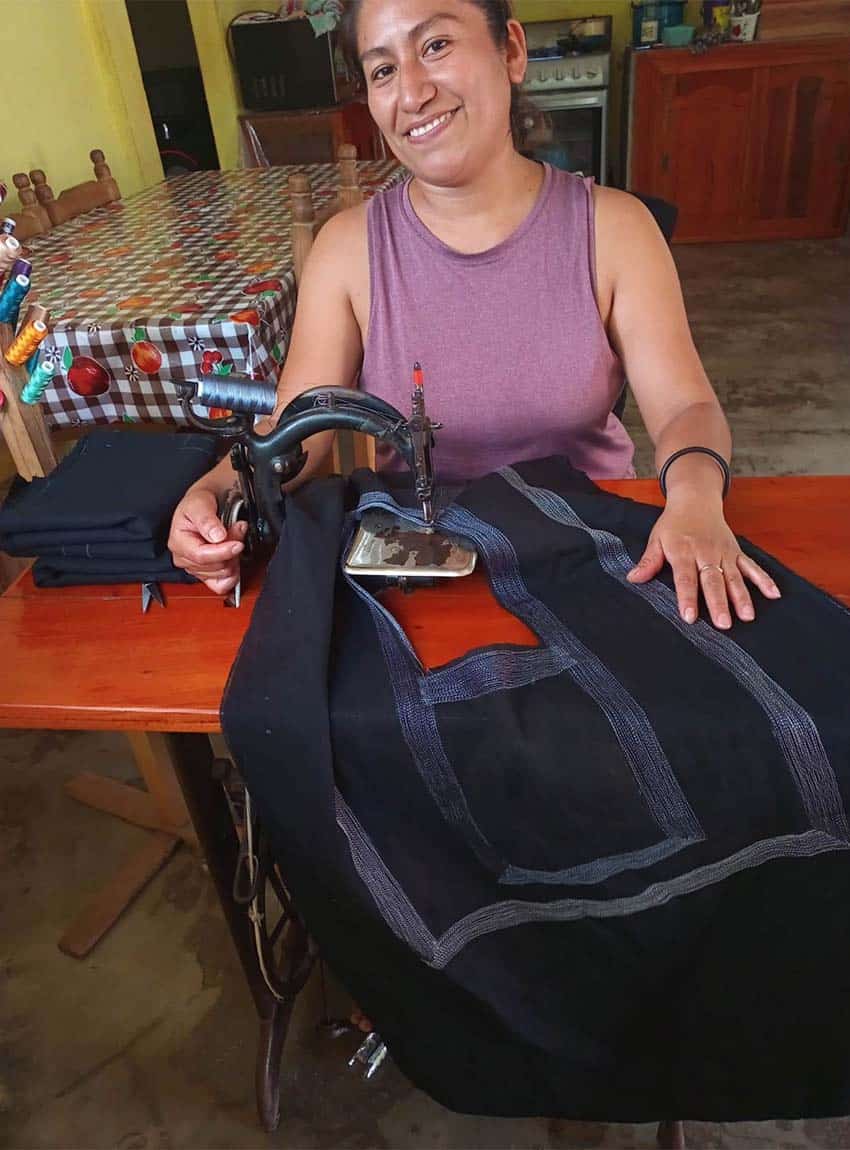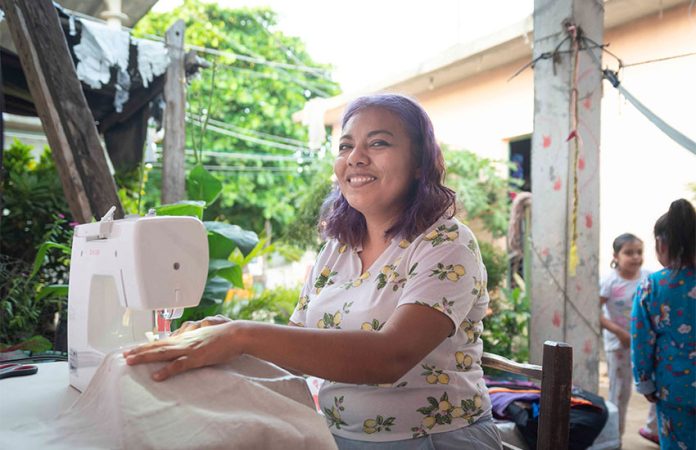A chance viewing of Mexican artwork in New York changed Japanese artist Miho Hagino’s life — and Oaxaca’s Isthmus of Tehuantepec gained a fan and advocate.
Born in Hokkaido, Hagino’s childhood contact with Japan’s ethnic Ainu people sparked a lifelong interest in minority cultures.
In the 1990s, she traveled to the United States and Canada, and in New York went to an exhibition on Latin American art.
“I had never seen so much of Frida Kahlo’s work in one place and time, interconnected…” she remembers.
Her first visit to Mexico followed in 1996, and by the end of the decade, she was a graduate of the San Carlos [art] Academy and a resident of Mexico.
By the early 2000s, Hagino was a working artist, with shows both here and abroad in various media, especially photography and video. But she “felt empty.”

She felt isolated as an Asian in Mexico. Mexican culture, she says, is “… very Occidental, very competitive and very individualistic… I never felt I really “landed” in Mexico.”
Other foreign artists have dealt with this, and Hagino’s solution was similar: she began researching the experiences of Japanese immigrants to Mexico.
“[This] involved me in social issues, confronting many of the social realities of vulnerable groups,” she says.
Works like Kahlo’s “Self-Portrait as Tehuana” put the Isthmus in Hagino’s consciousness, reinforced by the photography of Graciela Iturbide. But it was meeting Felina Santiago, a noted advocate for the Muxe (Oaxaca’s nonbinary “third gender”), that Hagino became intimately involved with the Isthmus.

Soon afterward, she established her Paisaje Social (Social Landscape) Foundation, which looks to support marginalized groups through artistic projects.
A recent program under this umbrella is Xunca para Tecas, a Zapotec/Spanish mix of a name that translates to “endearing youngest daughter.” Its purpose is to buy and resell traditional huipil garments from the Isthmus, specifically in the Oaxaca municipality of Juchitán. But it does so with a twist.
The huipils themselves are cut and embroidered the traditional way, by both Muxe and women artisans living in Juchitán, plus those who have migrated to Mexico City. But the project experiments with the final sewing to create artistic garments.
These have had appeal to urban buyers, especially in Mexico City, particularly those who wear them in public appearances, such as the El Palomar Chorus that supports women’s issues.
The spark for the project was the September 7, 2017, Chiapas earthquake that hit Juchitán hard. Not only was there physical destruction, information about it got bumped out of the news cycle when another major quake hit central Mexico only 12 days later, causing major damage in Mexico City.
Xunca’s goal is to provide new markets for Tehuantepec’s traditional huipils by balancing innovation with tradition.

All huipils are initially cut and embroidered in the traditional way; no further cutting or decoration is allowed. All of the innovation comes from the final sewing of the seams.
Hagino is not comfortable telling artisans what to make, but economic considerations mean that special orders are negotiated, and accepted, if they are not “disrespectful” to tradition. This can be tricky because even certain color combinations can have cultural significance.
But some rather significant changes are being experimented with, most recently that of working with linen — rather than the synthetics that have taken over much of the making of huipils in the past century. The switch is being accepted in part because synthetics are not comfortable in Tehuantepec’s hot and humid climate; linen is durable and breathable.
However, almost all sales of Xunca’s garments are outside of the Isthmus region and, for now, concentrated in and through Mexico City. There has been some export, but this is still difficult for such a small project.
Although it has been five years since the 2017 earthquake, the project continues because Juchitán’s artisans still have great difficulty in making a living. Traditional communities are still struggling to rebuild, but more important to Hagino is the fact that the overall economy of Tehuantepec is changing.
With easy access to both the Pacific and the Gulf, abundant oil and wind power and cheap labor, industrialization is starting to take hold in the Isthmus, enticing the local populations to a more modern lifestyle.

This is a personal issue for Hagino, who blames mass industrialization for making the Japanese people unhappy. They have lost touch with their traditional culture, she says, with a hectic lifestyle that makes them forget even how to cook their own food.
She wants Oaxaca to avoid this fate.
But that isn’t easy. Traditional huipil making has already been greatly modified. Natural fibers were replaced long ago by cheaper and brighter synthetics. Hand-embroidery disappears in favor of home sewing machines, which in turn are threatened by programmable ones.
The artisan participants are happy with the project, Hagino says, but avoiding economic, legal and social issues is not easy. The project allows the artisans to guide pricing for their huipils, working to keep other costs as low as possible so that the final product has a marketable price.
“Cultural appropriation has become something of a bomb, in large part because of Mexican authorities’ complaints about foreign designers making money with traditional indigenous garments [and] excluding the indigenous groups,” Hagino said.
Xunca Para Tecas used a Mexican fashion designer for the initial reworking, but that decision has not avoided issues over the use of the designs outside of the Tehuantepec community. Given recent controversies involving foreigners, innovation and traditional Mexican clothing, this situation is delicate, to say the least.
Leigh Thelmadatter arrived in Mexico over 20 years ago and fell in love with the land and the culture in particular its handcrafts and art. She is the author of Mexican Cartonería: Paper, Paste and Fiesta (Schiffer 2019). Her culture column appears regularly on Mexico News Daily.
